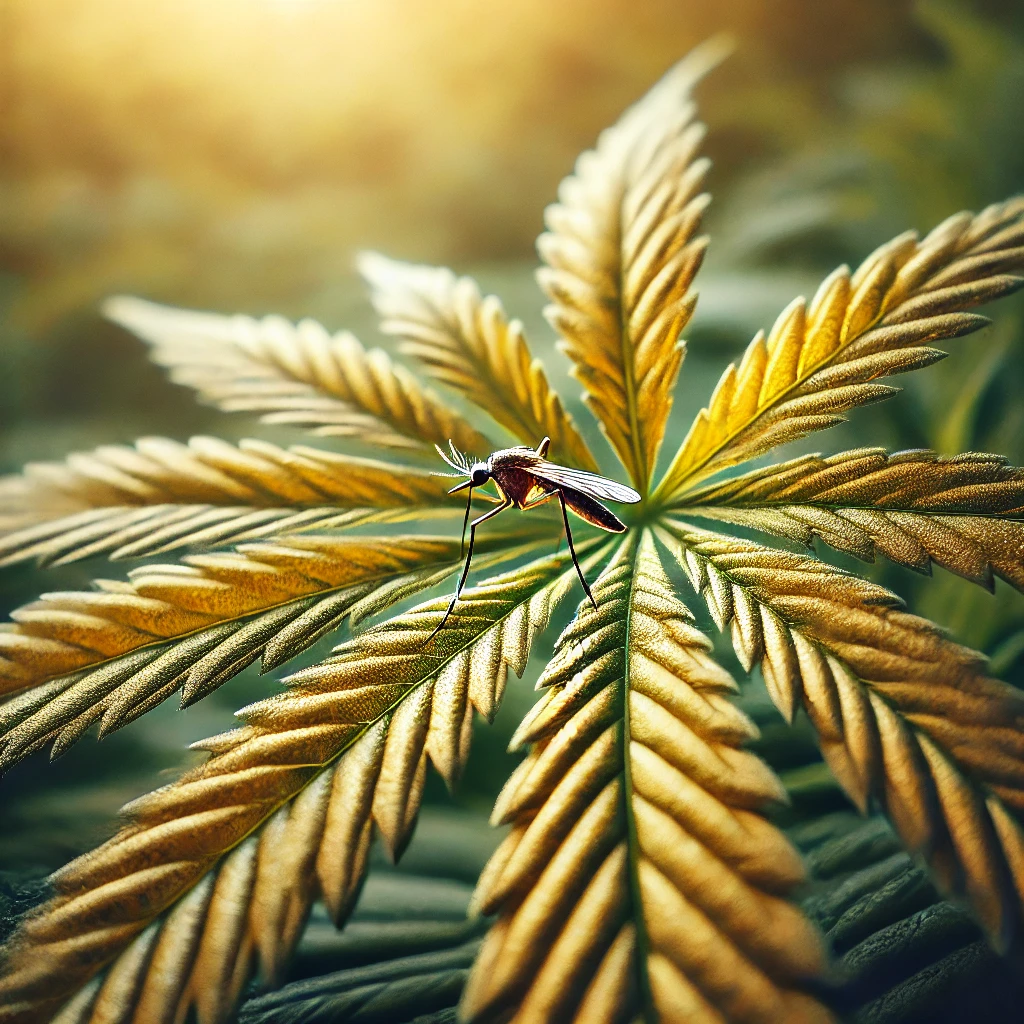Hemp vs. Mosquito—it’s a tough battle indeed. Considering the excessive spread of Malaria cases worldwide, specialists have devoted their time to researching the most effective way of stopping these vicious mosquitoes from spreading their lovely diseases in humankind.
The development of hemp (Marijuana sativa L.) in the European Association is consistently expanding due to the local area arrangements that are pointed toward further developing low-influence agrarian methods and valorizing the rural and quality creations. Outstandingly, in Italy, around 4000 ha are developed with hemp by ranches for an expected pay of around 40 million euros. In this situation, creating imaginative items from this multipurpose crop is vital. In such a manner, the hemp rejuvenating ointment (EO), which is a combination of unpredictable builds created in the bract glandular hairs of the plant inflorescences, is a specialty item that is acquiring interest from organizations for its conceivable application in various fields, like natural farming, drugs, beauty care products, and herbal insect poisons. Hemp EO comprises monoterpenes and sesquiterpenes, with a lower commitment to the cannabinoid part. Plant EOs can be used for their antimicrobial, calming, insecticidal, and parasiticidal properties. In this regard, hemp EO has until now gotten little consideration.
Malaria causes 219 million cases and 435,000 related deaths every year. Female Anopheline mosquitoes infuse Plasmodium parasites into the human circulatory framework during the blood feast. Anopheles gambiae and An. Stephensi are the fundamental jungle fever vectors in Africa and Asia.
Malaria control systems depend on vector control through insect-poison-treated mosquito nets and house showering by indoor residual splashing. In endemic regions, engineered pesticides, such as pyrethroids, have been used for larval and adult mosquito control for a long time. Other than the significant expenses of usage, their unnecessary use is improving insect-poison obstruction.
The requirement for maintaining intestinal sickness control procedures and developing insect poison obstructions actuate the investigation of new regular pesticides. In this specific circumstance, plant EOs and their bioactive particles can comprise a possible weapon against bug vectors and are considered compelling larvicides with fewer mosquito obstruction issues. Additionally, they are biodegradable and minimal-expense items that could be used in jungle fever control programs. Among different harvests accessible as modern wellsprings of EO, hemp, Marijuana sativa L. (Cannabaceae) has, as of late, gotten developing interest for its likely use as a natural insect poison. To be sure, plant inflorescences have been created as a characteristic weapon against phytophagous bugs, emitting fundamental optional metabolites, such as cannabinoids and unpredictable terpenes. In past reports, C. sativa EO succeeded against aphids, houseflies, and ticks. In addition, this EO was eco-accommodating since no poisonousness was identified on non-target life forms, such as worms and ladybirds. Prominently, the conceivable advancement of hemp EO-based bug sprays would partake in the accompanying benefits:
1. Absence of comparative items available
2. Minimal expense of natural substance (habitually as a result)
3. Accessibility of farming areas for plant development all over the world
4. Expanding interest in eco-accommodating and safe items
5. Probability to part the finished results into different fields, for example,
beauty care products and drugs.
The preclinical cell model for evaluating the security and harmfulness of the synthetic and plant-inferred effective bug anti-agents and bug sprays have been applied using human keratinocytes and dermal fibroblasts. The skin answers various actual improvements through the adjustment of explicit pathways. The epidermis is composed of keratinocytes, which address 95% of the epidermal cells and engage with the commencement and propagation of skin provocative and immunological reactions. In addition, fibroblasts stringently communicate with keratinocytes and are associated with wound mending. Keratinocytes, as well as fibroblasts, discharge a few proinflammatory go-betweens, including interleukin-1 beta (IL-1 beta), IL-6, IL-8, growth putrefaction factor-alpha (TNF alpha), under irritation improvements, and a few examinations have shown that etoposide (ETO) triggers cytokine creation in human cell lines in vitro.
On this premise, the primary target of this study was to check if the EOs obtained from inflorescences of hemp might be of interest for assembling herbal insect poisons, as well as their security profile for administrators. For this reason, we chose two distinct hemp assortments, specifically, Felina 32 and Carmagnola CS. We refined the EOs from new and dry material and monoecious, male, and female inflorescences using two unique extraction methods — steam refining (SD) and hydrodistillation (HD) — to confirm whether the inconstancy of the synthetic profiles might affect the natural exercises. The possible harmful impacts of the chosen hemp EOs were surveyed on hatchlings and pupae of An. stephensi and An. Gambia mosquitoes. Besides, we explored the possible favorable or calming impact of hemp EOs to assess their protected use for administrators by dissecting the proinflammatory cytokines discharge in ETO-treated human keratinocytes and fibroblasts. Finally, to arrive at a genuine usage of hemp EOs, a primer assessment of their embodiment in nanoemulsions (NEs) was performed. Nanoencapsulation assists with beating the poor physicochemical solidness, restricted water dissolvability, high instability, and warm deterioration that generally portray EOs [26]. In this manner, the likelihood of exemplifying EOs and plant extricates inside NEs guarantees the steadiness and security of parts, an increment of organic action, and superior dissolvability. Hence, the hemp EO NEs have been effectively evolved and portrayed, and their dependability over the long run has been assessed.
The specialists found that, compared with other regular insecticides, it only took a limited quantity of the hemp concentrate to kill the hatchling strains.




